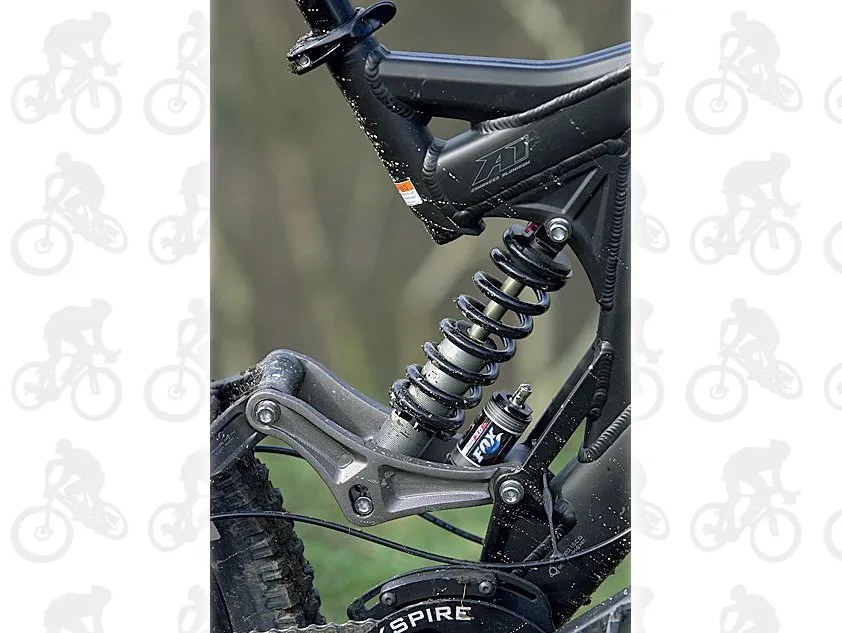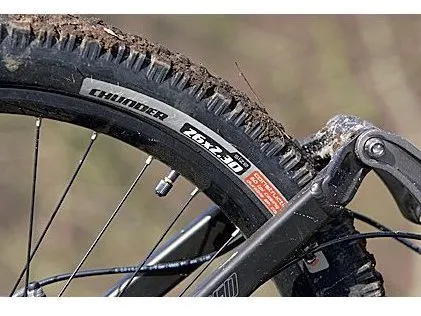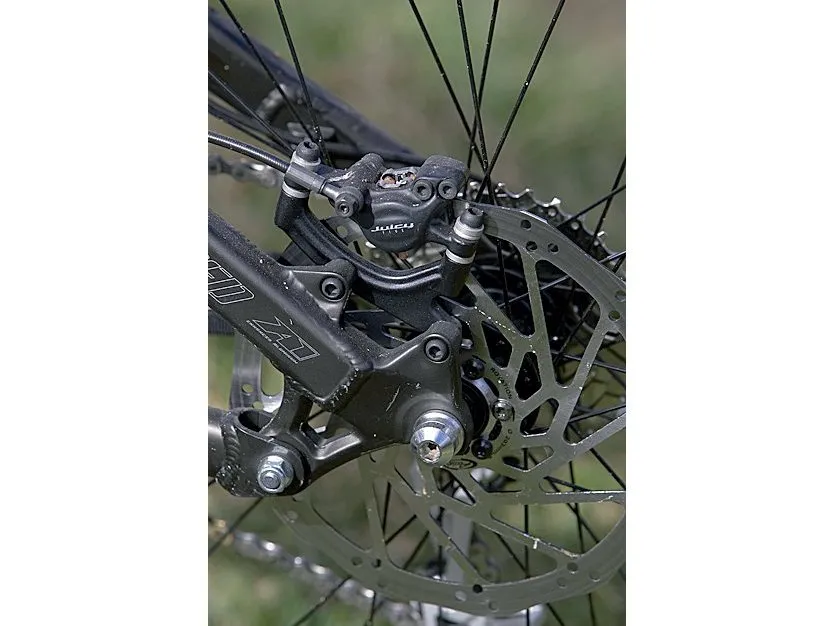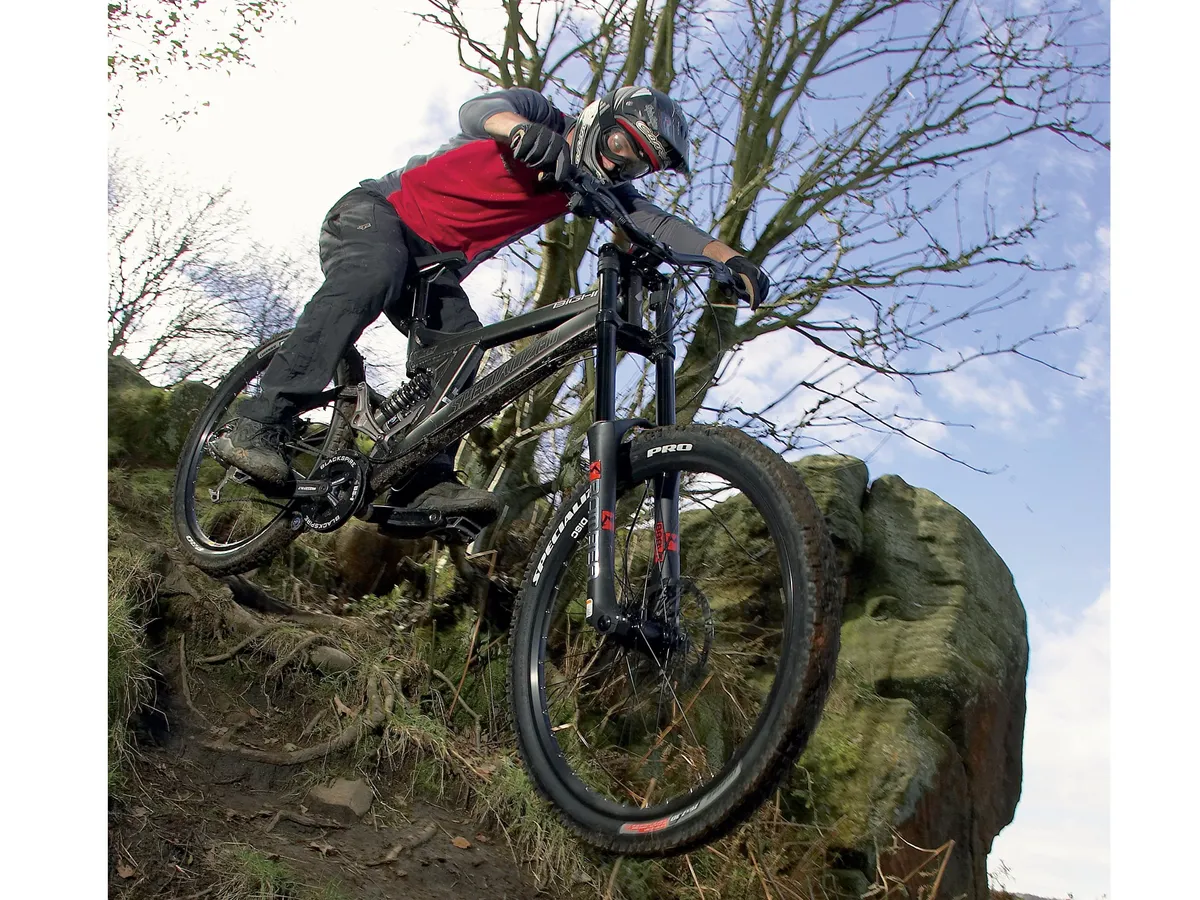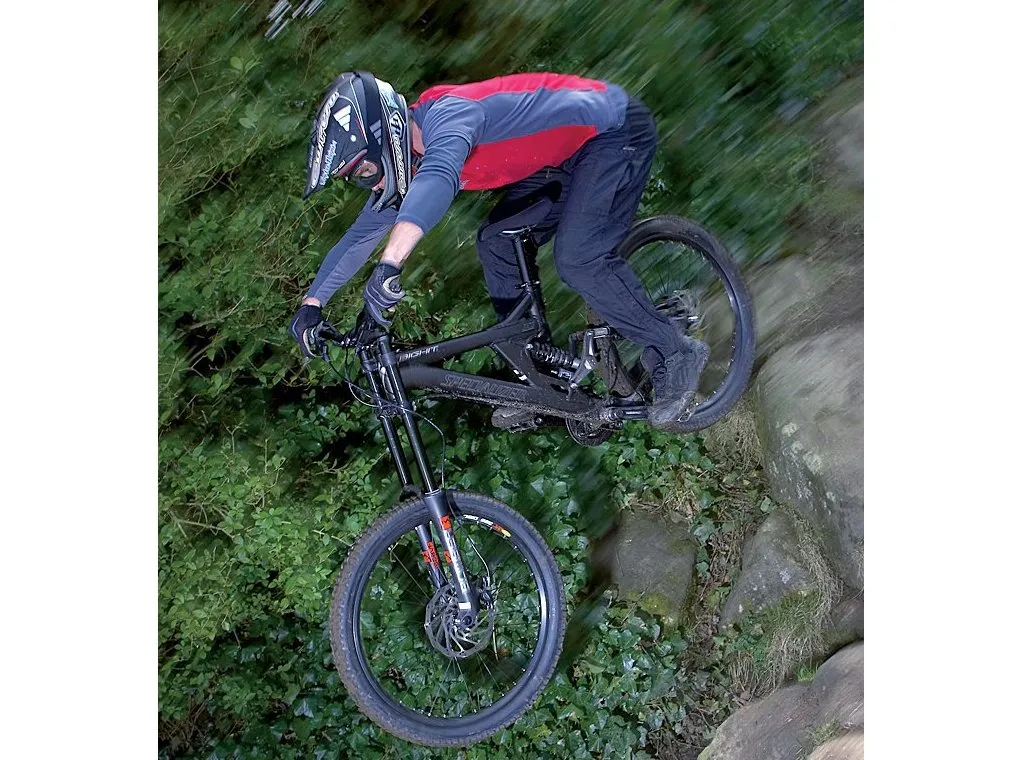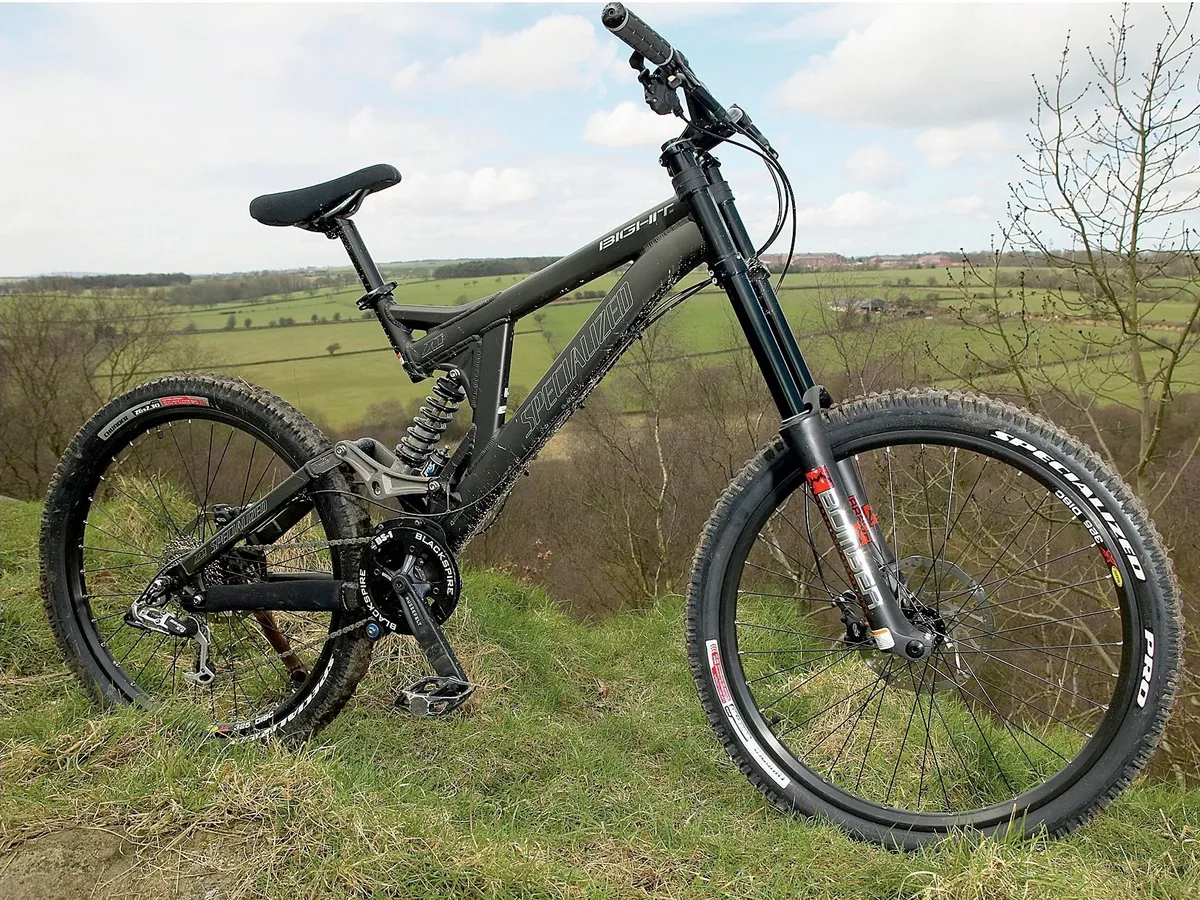Specialized's original BigHit really was a big hit with the gravity crowd, but it was always held back by its oddball 26in front, 24in rear wheel arrangement. The new BigHit rolls on 26in wheels at both ends and the result is a superb race bike.
The chassis
The new back wheel size opens up far more options for upgrading rims and tyres, but it does stretch the wheelbase out, making this the longest bike here by over an inch. You still get 8in (208mm) of travel from the Fox DHX 3.0 shock, though.
Two different mounting positions on the beautiful forged linkage piece also give two ride height/geometry set-ups for tight and twisty or straighter and faster courses. There's plenty of mud clearance too, even with the supplied 3in tyres.
More neat forged sections provide maximum strength for the ISCG-tabbed bottom bracket area, the dropouts and seatstay and chainstay bridges. The dropouts are also slotted rather than clamped, which allows for fast removal if not maximal stiffness. The 135mm rear spacing means you have more hub options to choose from too.
Big box-fronted hydroformed tubes make up the rest of the frame in Specialized's typical FSR interrupted seat tube fashion. There are a few inches of saddle adjustment before you need to saw the seatpost down, but freeriders will need a telescopic post for pedalling back up hills.
The detail
Specialized have put together a reasonable package for the money (the frame costs £799.99 on its own). Fox's DHX 3.0 shock has adjustable rebound and 'Boost Valve' progression damping, and performed flawlessly with minimal tinkering. If we were racing we'd probably drop to a slightly lighter spring to give more traction. The extra resistance comes in handy when you're dropping big ones though, and it stops the bike feeling mushy under pedalling.
The Marzocchi 888 VF fork was super smooth and felt great from the box. Only occasionally excessive dive upset the equilibrium, but we never felt the need to go fishing for the internal rebound adjuster. The smooth, very linear fork stroke only bothered us when it bottomed out faster than expected from time to time. The direct-fit Marzocchi stem also extends the totally rock solid feel of the stiff frame.
Avid Juicy 5 hydraulic disc brakes with 203mm (8in) rotors are a real bonus once they're bedded in because they provide a real feel advantage over the more wooden Hayes units of the other bikes, with all the power you'll ever need.
The BlackSpire chainguide was totally trouble free, as was the high quality SRAM-based transmission. A neat rear mech protector stops the X.9 mech getting torn off, too.
The wheels - Mavic EX325 rims and Specialized hubs - are fine, although the 60a compound of Specialized's Chunder tyres is noticeably less grippy than the Kenda Stick E rubber on the other bikes.
The ride
Although the BigHit is slightly down on spec compared to the other bikes here, it more than makes up for it in unshakeable ride quality. As soon as you climb on it just feels utterly planted, with a super solid feel through the bar, frame and fork.
The long wheelbase boosts stability and everything just feels right in terms of cornering and weight balance. As a result, we were confident busting our biggest moves as soon as we hit the trails. It's difficult to describe really, but the Specialized always felt that bit tighter and capable of much bigger things than the other bikes here.
Despite the extra length, the bike still turns in tight on every apex at race speeds and there's bags of feedback for surfing the slightly slippery tyres too. Straight line and high speed stability is also increased by the 26in rear wheel.
The new BigHit isn't as flickable as the old 24in version though, and it occasionally got caught out in really tight, twisty situations where there wasn't enough speed to slide it.
Again, the rear shock was slightly over-sprung for the relatively light test crew - we'd probably drop 50lb from the spring rate for a totally plush feel - but that helped when we threw the bike off the deep end.
The FSR linkage tracked the ground very well, no matter whether we were braking, pedalling or just hammering flat-out. Some gentle progression to the stroke meant we weren't bottoming out often either.
Every time we rode the Specialized it just felt stiffer, tighter and like it had a lot more to give than the other bikes; not necessarily in travel, cornering grip or anything tangible like that, but just in massively confident overall performance.
We'd get the shorter Small frame for chuck-about freeriding or streetwork, but it's undoubtedly ready-to-race DH/head for the Alps straight from the box, and it has serious upgrade potential to boot.
